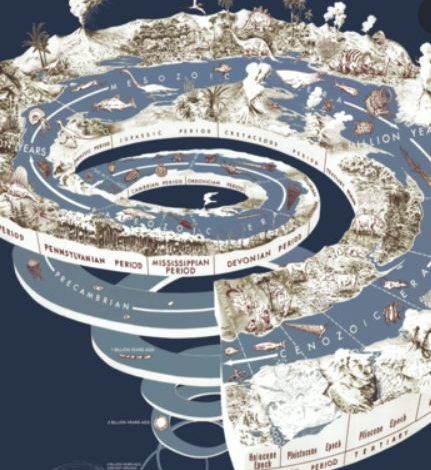Evolutionary history of life

The evolution of plants has resulted in a wide range of complexity, from the earliest algal mats, through multicellular marine and freshwater green algae, terrestrial bryophytes, lycopods and ferns, to the complex gymnosperms and angiosperms (flowering plants) of today. While many of the earliest groups continue to thrive, as exemplified by red and green algae in marine environments, more recently derived groups have displaced previously ecologically dominant ones; for example, the ascendance of flowering plants over gymnosperms in terrestrial environments. 498
There is evidence that cyanobacteria and multicellular photosynthetic eukaryotes lived in freshwater communities on land as early as 1 billion years ago, and that communities of complex, multicellular photosynthesizing organisms existed on land in the late Precambrian, around 850 million years ago.
Evidence of the emergence of embryophyte land plants first occurs in the mid-Ordovician (~470 million years ago), and by the middle of the Devonian (~390 million years ago), many of the features recognised in land plants today were present, including roots and leaves. By Late Devonian (~370 million years ago) some free-sporing plants such as Archaeopteris had secondary vascular tissue that produced wood and had formed forests of tall trees. Also by late Devonian, Elkinsia, an early seed fern, had evolved seeds.
Evolutionary innovation continued throughout the rest of the Phanerozoic eon and still continues today. Most plant groups were relatively unscathed by the Permo-Triassic extinction event, although the structures of communities changed. This may have set the scene for the appearance of the flowering plants in the Triassic (~200 million years ago), and their later diversification in the Cretaceous and Paleogene. The latest major group of plants to evolve were the grasses, which became important in the mid-Paleogene, from around 40 million years ago. The grasses, as well as many other groups, evolved new mechanisms of metabolism to survive the low CO2 and warm, dry conditions of the tropics over the last 10 million years.

